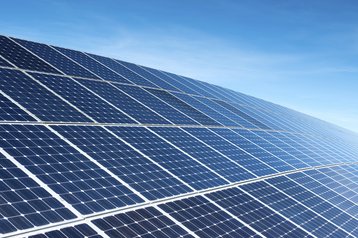Amazon is paying to build and operate an 80 MW solar farm in Accomack County, Virginia. The agreement is the cloud player’s second large investment in renewable power in the US.
The farm, to be called Amazon Solar Farm US East, wil be constructed by solar energy company Community Energy, and is expected to produce 170,000 MWh of energy per year. In the usual comparison, this is about as much as 15,000 US homes. The farm should come on stream by October 2016.
Catching some rays
The Amazon solar farm will be the largest solar farm in the state of Virginia, and under the power purchase agreement, all its energy will go into the local electricity grids, and be paid for by Amazon. The power purchase agreement (PPA) means that effectively Amazon gets back a steady power supply, in exchange for funding an equivalent amount of renewable energy to go into the grid.
Amazon committed to using 100 percent renewable energy, back in November 2014, but has been criticized by Greenpeace for not having a specific roadmap to achieve this. In April 2015, it said it has about 25 percent of its power from renewable sources, and expects this to increase to 40 percent by the end of 2016.
“We are pleased to work with Amazon Web Services to build the largest solar farm in Virginia and one of the largest east of the Mississippi,” said Community Energy CEO Brent Alderfer. “This project, which wouldn’t have been possible without AWS’ leadership, helps accelerate the commercialization and deployment of solar photovoltaic (PV) technologies at scale in Virginia.”
This is Amazon’s second big renewable power purchase agreement in the US this year, following a deal for 150MW of wind power in Indiana, which, owing the intermittent nature of wind, amounts to 500,000 MWh of energy per year.
Virginia Governor Terry McAuliffe welcomed the farm: “Amazon’s new solar project will create good jobs on the Eastern Shore and generate more clean, renewable energy to fuel the new Virginia economy. I look forward to working with Amazon and Accomack to get this project online as we continue our efforts to make Virginia a global leader in the renewable energy sector.”
Despite its genuine enthusiasm for renewable energy, Amazon continues to make the point that “the greenest power is that which is not consumed”, arguing that moving IT services to the cloud produces such massive improvements in effriciency and utilization that, whatever energy supply mix was being used, the impact is overwhelmingly positive.
“On average, AWS customers use 77 percent fewer servers, 84 percent less power,and utilize a 28 percent cleaner power mix, for a total reduction in carbon emissions of 88 percent from using the AWS Cloud instead of operating their own data centers,” said Amazon’s Jeff Barr in s blog post responding to Greenpeace.

